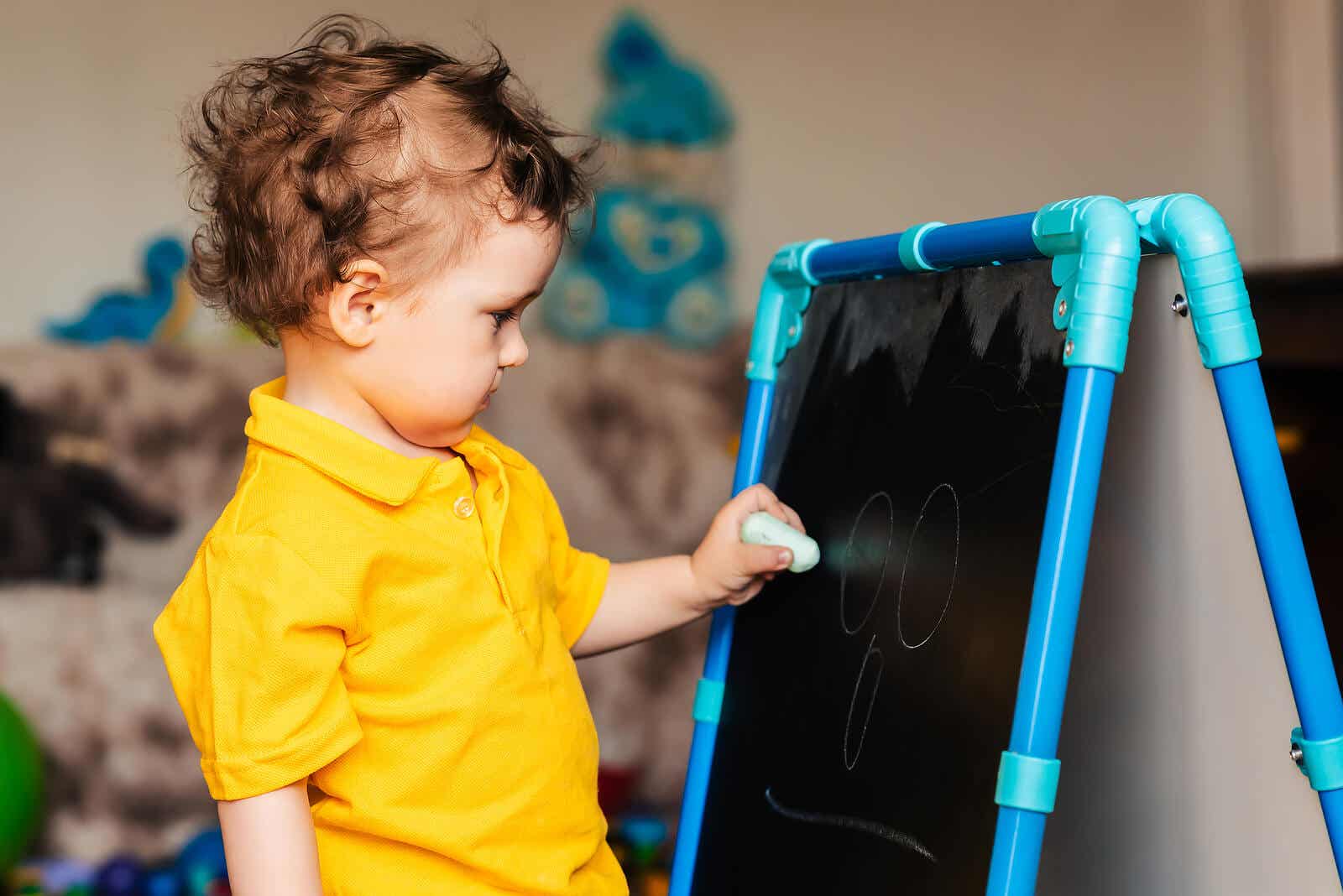What is the WWW learning technique?


Written and verified by the pedagogue and trainer María Matilde
Within the field of pedagogy, there are many strategies and methodologies for teaching children to learn. And many of them aim to achieve meaningful learning through an enjoyable, creative, and fun process. In this sense, the WWW learning technique is a useful and innovative tool that helps children to discover the relationships that exist between the different parts of a whole, from an early age, while making use of their imagination.
The WWW learning technique: what I see, what I don’t see, what I guess
The WWW learning technique helps to establish a relationship between the different elements or aspects that allow learners to understand a topic. In other words, faced with a concept in question, the aim is to establish the possible relationships that may exist between the various components that make it up. To do this, we must use hypothetical, creative, and critical reasoning.
There are three key factors or elements that characterize the WWW learning technique:

- What I see: everything I can see with the naked eye, i.e., what I observe, know, or recognize about the topic in question.
- What I don’t see: everything that I can’t observe or appreciate directly. Everything that’s not explicitly contained in the subject, which doesn’t mean that it doesn’t exist or it’s not contained. For example, I may know what a product or object consists of, but not know how it was made or constructed.
- What I guess (infer): everything that I can deduce from a subject or a specific situation. I can do this by relating what I see and what I don’t see. In other words, it’s these first two elements that allow us to establish a final conclusion on the subject.
Advantages and benefits of using the WWW learning technique
The WWW strategy is more suitable for early education levels, but it’s valid and useful at higher levels as well, including university. Thus, the three questions that make up the technique are the trigger for students to reflect, investigate, evaluate, and establish relationships and hypotheses.
In this way, children find solutions to a problem or conclusions about a situation. This is precisely the main advantage of this strategy, which encourages the use of imagination and creativity in the children’s learning process.
One of the benefits that the WWW technique poses when it comes to learning is that it allows a progressive development of the children’s capacity for questioning, and, with this, it helps the development of critical thinking.
In addition, as children answer the questions this technique proposes, they bring their previous knowledge into play. This prior knowledge will help to better understand the new knowledge, and they must rework or discard it.
Therefore, the WWW learning technique‘s very useful, for example, when a teacher is going to present a new topic. This is because the strategy allows the educator to capture the children’s full attention and encourages them to find all the possible meanings, related concepts, and connections that underlie a specific image and the main topic.
How to apply the WWW learning technique?
First of all, the presentation of a topic, case, or situation must be made, which must go along with an image. Then, use the three elements that make up the WWW learning technique, in the form of questions: what do I see? What don’t I see? What can I guess?

Accordingly, it’s very helpful for the educator to make use of the chalkboard to write down everything the children say. In this sense, both an outline and a graph in which the main topic with the information corresponding to each question can help to organize the knowledge and have a better perspective of everything.
An example of the application for learning
A teacher can apply the WWW technique during an initial lesson to learn about different animals and begin to discover how they reproduce and how they eat. To do this, the educator can present the with a picture or photograph, for example, of a very quiet horse on a plain with a lot of grass. Afterward, the children should answer the three questions:
- What do I see: an animal that has four legs; around it there’s only grass.
- What I don’t see: I don’t see how the horse was born or how it reproduces, or how it breathes. Although I see grass around it, I’m still not sure what it eats.
- What do I infer: it’s a mammal. Why? Because it’s an animal whose reproduction takes place by internal fertilization and not by eggs. And, if it’s surrounded by grass, is it a herbivorous animal?
It’s during this last point where students must infer, deduce, and relate the first two questions. And this is the strong point of the WWW strategy for learning. That’s because it’s when children unleash their imagination and get their brains exercising and reasoning about the topic.
Within the field of pedagogy, there are many strategies and methodologies for teaching children to learn. And many of them aim to achieve meaningful learning through an enjoyable, creative, and fun process. In this sense, the WWW learning technique is a useful and innovative tool that helps children to discover the relationships that exist between the different parts of a whole, from an early age, while making use of their imagination.
The WWW learning technique: what I see, what I don’t see, what I guess
The WWW learning technique helps to establish a relationship between the different elements or aspects that allow learners to understand a topic. In other words, faced with a concept in question, the aim is to establish the possible relationships that may exist between the various components that make it up. To do this, we must use hypothetical, creative, and critical reasoning.
There are three key factors or elements that characterize the WWW learning technique:

- What I see: everything I can see with the naked eye, i.e., what I observe, know, or recognize about the topic in question.
- What I don’t see: everything that I can’t observe or appreciate directly. Everything that’s not explicitly contained in the subject, which doesn’t mean that it doesn’t exist or it’s not contained. For example, I may know what a product or object consists of, but not know how it was made or constructed.
- What I guess (infer): everything that I can deduce from a subject or a specific situation. I can do this by relating what I see and what I don’t see. In other words, it’s these first two elements that allow us to establish a final conclusion on the subject.
Advantages and benefits of using the WWW learning technique
The WWW strategy is more suitable for early education levels, but it’s valid and useful at higher levels as well, including university. Thus, the three questions that make up the technique are the trigger for students to reflect, investigate, evaluate, and establish relationships and hypotheses.
In this way, children find solutions to a problem or conclusions about a situation. This is precisely the main advantage of this strategy, which encourages the use of imagination and creativity in the children’s learning process.
One of the benefits that the WWW technique poses when it comes to learning is that it allows a progressive development of the children’s capacity for questioning, and, with this, it helps the development of critical thinking.
In addition, as children answer the questions this technique proposes, they bring their previous knowledge into play. This prior knowledge will help to better understand the new knowledge, and they must rework or discard it.
Therefore, the WWW learning technique‘s very useful, for example, when a teacher is going to present a new topic. This is because the strategy allows the educator to capture the children’s full attention and encourages them to find all the possible meanings, related concepts, and connections that underlie a specific image and the main topic.
How to apply the WWW learning technique?
First of all, the presentation of a topic, case, or situation must be made, which must go along with an image. Then, use the three elements that make up the WWW learning technique, in the form of questions: what do I see? What don’t I see? What can I guess?

Accordingly, it’s very helpful for the educator to make use of the chalkboard to write down everything the children say. In this sense, both an outline and a graph in which the main topic with the information corresponding to each question can help to organize the knowledge and have a better perspective of everything.
An example of the application for learning
A teacher can apply the WWW technique during an initial lesson to learn about different animals and begin to discover how they reproduce and how they eat. To do this, the educator can present the with a picture or photograph, for example, of a very quiet horse on a plain with a lot of grass. Afterward, the children should answer the three questions:
- What do I see: an animal that has four legs; around it there’s only grass.
- What I don’t see: I don’t see how the horse was born or how it reproduces, or how it breathes. Although I see grass around it, I’m still not sure what it eats.
- What do I infer: it’s a mammal. Why? Because it’s an animal whose reproduction takes place by internal fertilization and not by eggs. And, if it’s surrounded by grass, is it a herbivorous animal?
It’s during this last point where students must infer, deduce, and relate the first two questions. And this is the strong point of the WWW strategy for learning. That’s because it’s when children unleash their imagination and get their brains exercising and reasoning about the topic.
All cited sources were thoroughly reviewed by our team to ensure their quality, reliability, currency, and validity. The bibliography of this article was considered reliable and of academic or scientific accuracy.
- Cortez Cuadra, M. D. C. y Castillo Medrano, L. A. (2015). Aplicación de la estructura y función del cuadro QQQ como estrategias didácticas innovadoras que le permita al docente el desarrollo del contenido “Animales vertebrados” en los estudiantes de octavo grado C en la disciplina de CC. NN del Instituto Nacional Santa Teresa del municipio de Santa Teresa Carazo en el II Semestre del 2015 [Tesis doctoral, Universidad Nacional Autónoma de Nicaragua]. https://repositorio.unan.edu.ni/2245/1/10427.pdf
- Ramírez Montoya, M. S. (2018). Modelos y estrategias de enseñanzas para ambientes innovadores. Editorial Digital del Tecnológico de Monterrey. https://books.google.es/books?hl=es&lr=&id=0HFlDwAAQBAJ&oi=fnd&pg=PT2&dq=estrategias+de+ese%C3%B1anza+innovadoras+en+qu%C3%A9+consisten&ots=Y-1vuOTu4O&sig=-aSKIvZy9Q0UJY3mOri1OncLV78#v=onepage&q=estrategias%20de%20ese%C3%B1anza%20innovadoras%20en%20qu%C3%A9%20consisten&f=false
- Universidad Autónoma de Ciudad Juárez. (2018). Estrategias de Aprendizaje- QQQ. http://hdl.handle.net/20.500.11961/4184
This text is provided for informational purposes only and does not replace consultation with a professional. If in doubt, consult your specialist.








